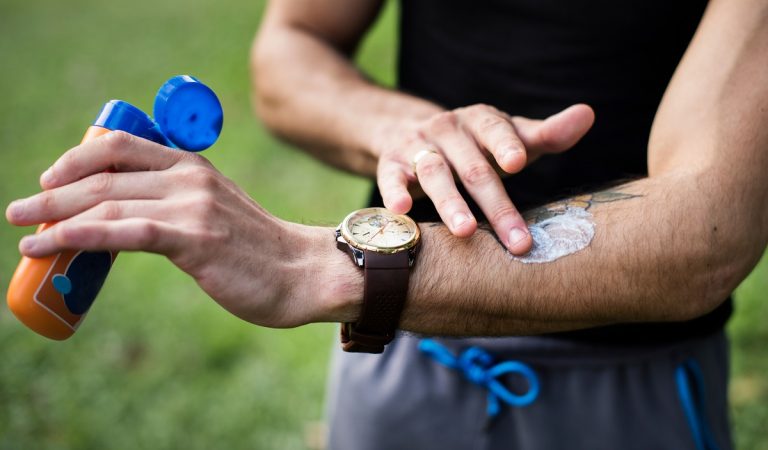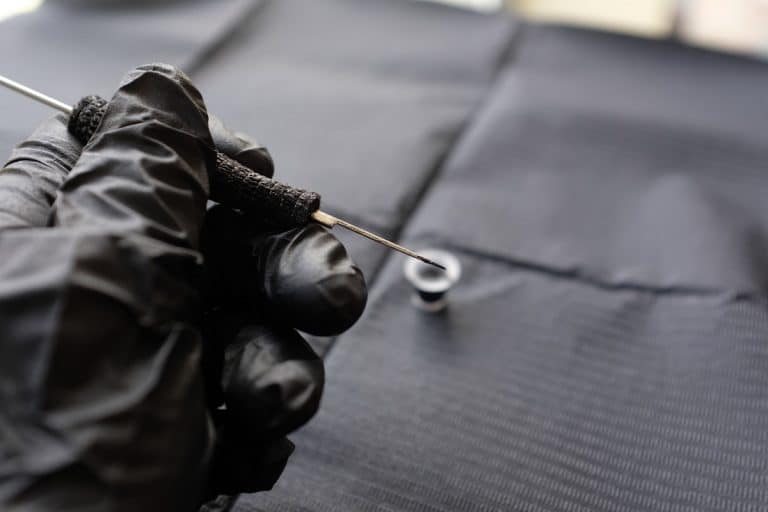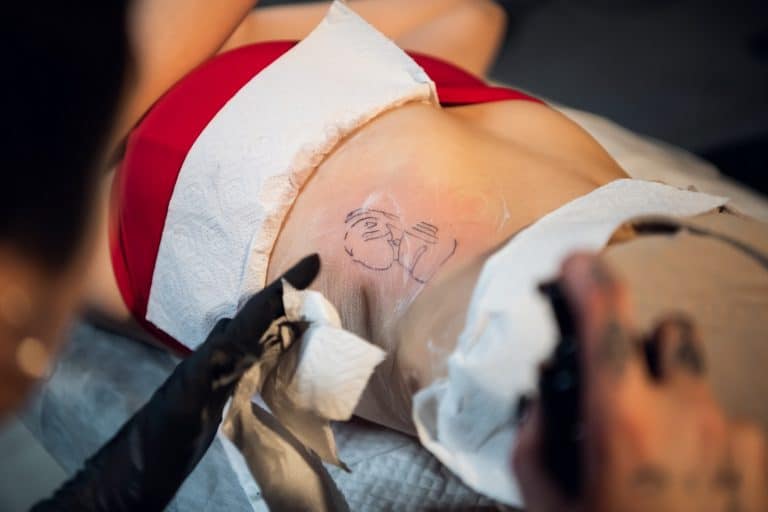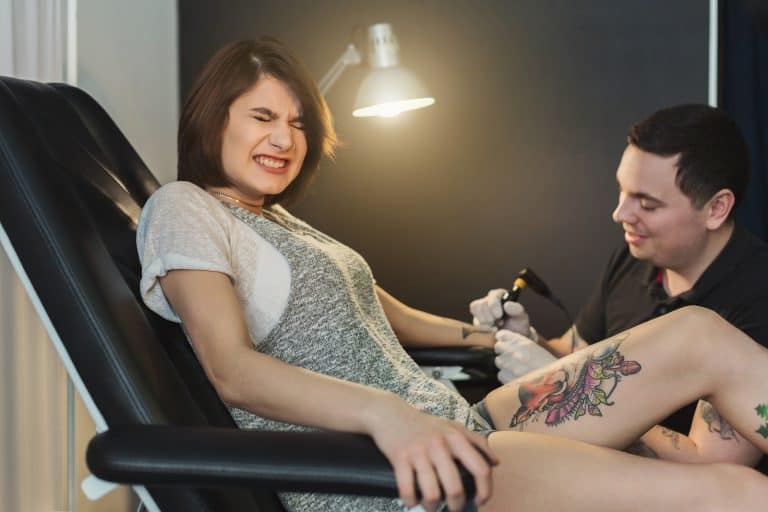Why Are Tattoos Permanent? – The Reasons Tattoos Last Forever
As we all know, once you get a tattoo, it is pretty difficult, and sometimes even impossible to get rid of it. Tattoos are permanent body art, which will last you a lifetime. Unless you go for a laser tattoo removal procedure, the ink you get is there to stay with you forever.
Now, as amazing as this sounds on its own, one cannot help but wonder why are tattoos permanent. What makes the seemingly indestructible in the skin and how does something as ink color manage to last for dozes of years?
These are the kinds of questions that just pop into your mind out of nowhere. And, once the questions are there, you cannot stop thinking about something so obvious but easily overlooked. Therefore, if you want to know what are tattoo permanent, you’re at the right place. In the following paragraphs, we’ll explore the reasons why tattoos last forever and hopefully provide you with a satisfying answer. So, let’s get started!
What Makes Tattoo Permanent? – Explained

Tattoo Application
Let’s start with the obvious – tattoo machines. Tattoo machines, tattoo guns, and tattoo needles are used to inject ink into your skin at a very high speed. At its fastest, a tattoo needle will puncture your skin over 3000 times per one minute, which is an incredibly high number. Of course, some tattoos or tattoo placements do not allow such a high puncture number, so they operate at 50 punctures per minute.
Tattoo needles carry the ink into the skin. Upon puncturing, the needle creates a vacuum environment where the ink is transferred and kept. Then, the needle punctures the skin again and repeats the process. Some inks require repeated needle puncturing, like lighter ink tones (white, yellow, light blue, light green, etc.).
Once the ink is transferred into the skin, because of the vacuum environment, it stays there. However, this is only one of the factors that contribute to ink staying permanently in the skin.
Tattoo Ink and The Skin
As we mentioned, the ink is transferred into the skin via a tattoo needle, at a rather high speed. However, the vacuum that the needle creates isn’t enough to hold the ink alone.
First of all, the ink is placed in the skin layer called the dermis. Now, the outer skin layer is known as the epidermis. The needle goes through the epidermis, where it reaches the inner layer or the dermis. This is the perfect placement for the ink because, if it were placed in the epidermis, it would just leak out. Now, because the vacuum environment is created inside the skin, the ink will stay there and have a really hard time leaking out.
Now, we also have to mention that because of this, a tattoo looks less vibrant once it heals. There is basically a layer of epidermis over the tattoo that makes it look less fresh and vibrant, which is totally okay. But, we have to mention this, especially when we talk about the permanence of tattoos and the way they look as we get older.
Tattoos and The Body Reaction
Now, while you’re being tattooed, the tattoo needle basically creates small wounds inside the skin. The puncturing damages the skin, which is why a newly done tattoo is considered to be a fresh wound.
Now, your body doesn’t like damage. It then has to transfer all the attention to the area of damage so that it could promote its healing as fast as possible and prevent infection. Because of this, the body sends white blood cells or macrophages to the wounded area.
Macrophages (Greek for ‘big eater’) are a type of white blood cells that are responsible for removing dead cells and foreign bodies. Because the ink is considered a foreign body, the WBC attack the ink engulfs it, and processes it so that you can get rid of this potentially toxic foreign body, as the body interprets it.
However, the WBCs cannot get rid of all the ink. Some ink particles are too large for the macrophages, so the ink gets soaked up by the dermal cells known as fibroblasts. As a result, the ink remains suspended by the dermal cells and stays in the dermis of the skin. The ink that ends up in the epidermis of the skin gets removed by the white blood cells in the following 7 to 14 days.
Now, the initial macrophages, that were engulfing the ink, eventually die. So, new macrophages form and travel to the ‘wounded area’. However, instead of the ink, the new macrophages have to ‘clean up’ the dead macrophages. This cycle continues, so the ink stays intact and remains in place as a permanent tattoo.
Tattoo Side Effects and Tattoo Aftercare
Many disregard tattoo aftercare as playing an important role in the permanence of the tattoo, but it is probably the most important aspect of tattoo permanence. Proper tattoo healing allows the body to deal with the ‘wound’ and help it heal quickly and healthily.
Without proper tattoo aftercare, the tattoo can get inflamed and infected. This can result in tattoo damage, ink displacement, or even leaking. In some cases, the tattoo infection gets so serious that people develop high fevers and have to seek immediate medical attention and medication treatment. Also, in such cases, the tattoo is completely damaged and inkless.
Other tattoo side effects can also mess up the ink placement and the tattoo healing process. For example, ink allergy, tattoo irritation, tattoo raising, blowout, or ink leaking can all mess up the tattoo or even have the ink leak out. That is why it is essential to get tattooed by a professional, experienced tattoo artist, and actually take care of the tattoo while it heals.
But, What Happens With Tattoos As We Age?
Well, as you can see, the permanence of the tattoo depends on numerous factors; the execution of the tattooing process, the proper ink placement into the dermis, the proper tattoo healing, and the natural immune response from the body. All of this contributes to the ink staying in place for years to come. But, what happens to the tattoo as we age?
Sure enough, tattoos do last a lifetime. But, as the skin ages and after years of it being exposed to UV rays, the tattoos do fade. Tattoo fading is completely normal and an expected occurrence, especially with colored tattoos.
Because of the skin aging, the skin loses elasticity and starts to stretch. As the skin stretches, it also stretches the ink, which in turn makes it less saturated and prone to faster fading.
Moreover, unprotected exposure of the tattoo to the UV rays also promotes faster fading. Proper sunscreen protection is essential if you want the tattoo to look as fresh and as saturated as it looked when you first got it.
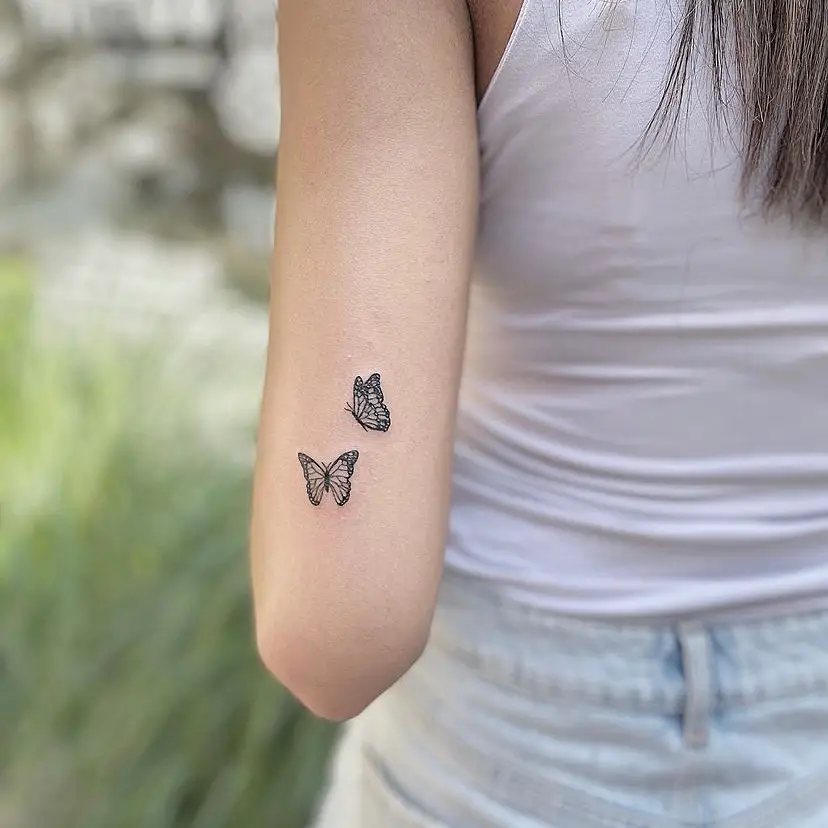
How Do You Get Rid Of a Tattoo?
Now, even though tattoos fade with age, they never completely disappear. The only way to actually have a tattoo removed and gone is by getting a laser tattoo removal procedure. The laser used in this procedure is known as the Q-switch laser. It targets the ink using infrared waves, which heat up the ink and ensure it disperses in the body.
However, this cannot be done in only one session. It can take up to 20 laser removal sessions to get rid of a tattoo, especially if it’s a colored one. Ink colors like yellow, light green, light blue, light red, or white are much harder to remove because the infrared waves have a hard time detecting these colors. Tattoos that are done in darker ink colors, like black, dark blue, dark purple, or brown, get removed faster and easier.
Other removal methods include surgical tattoo removal, where a surgeon cuts out the tattooed skin and then stitches together the remainder skin. There is also dermabrasion, where, using a sanding device, the tattooed skin layer is ‘removed’.
However, this is an incredibly invasive removal method and it is far from being recommended. Dermabrasion can cause serious skin irritation, inflammation, and scarring. Moreover, it does not guarantee that the tattoo will be removed since it is placed inside the skin, not on the surface.
Final Thoughts
Getting a tattoo is a big deal, even though many see it as something trivial. Tattoos are there to last, so it is essential to really think about the aftermath of getting tattooed and how a tattoo may affect your life. Unless you have hundreds of dollars to spare for laser removal, make sure to think about where you’re getting tattooed, what design will stay meaningful to you even 20 years from now, and where you want your tattoo to be placed.
- Safe, non-toxic plant-based temporary tattoos made with 100% high-definition printing for a realistic look without the pain
- Easy to apply and remove - just stick for 20 seconds then take off
- Set includes 5 sheets with 17 fun, delicate designs like hearts, cats, smiles, suns, moons, and more
- Waterproof and long-lasting - stays on up to 2 weeks of wear
- Fashionable for women, men, girls and boys
- Place on arm, wrist, neck, leg, finger, waist, foot and more
- Great for parties, birthdays, and showing your unique style




